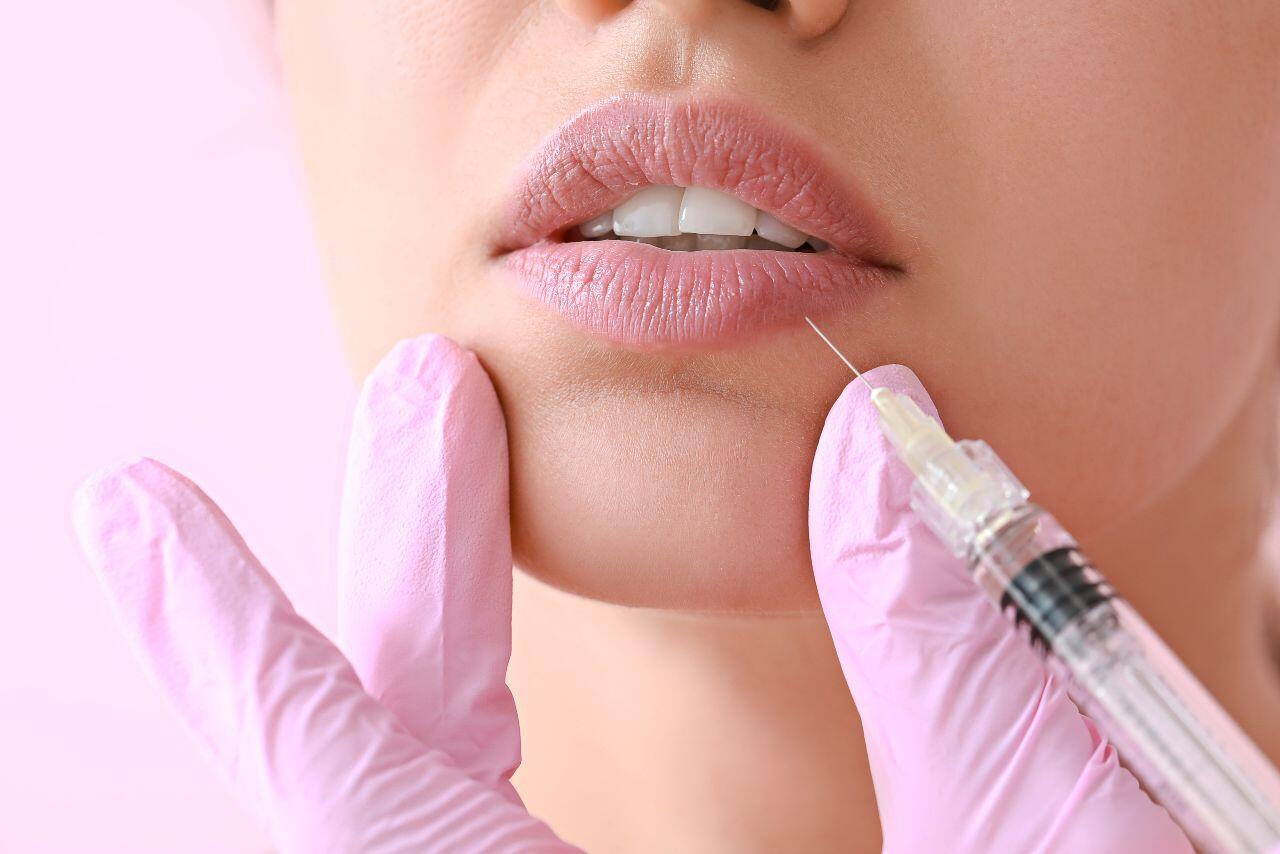
Lip fillers are a safe, minimally invasive alternative to surgery for fuller, more symmetrical lips — which can be accomplished in just one office visit without the high cost, extensive preparation, or lengthy recovery period of surgery. In this article, we review popular lip fillers, how long they typically last, and tips for extending your results after your filler treatment if you are thinking about using this method of lip augmentation.
Lip Fillers
In order to add volume, define lip shape, and smooth out lip lines, lip fillers are injected strategically into the lips during an office visit. The effects of the procedure are typically felt right away, though some minor lip swelling is normal. After 1 to 2 weeks, the swelling goes down, revealing the finished lip augmentation procedure result. Juvederm, Restylane, and Belotero are some of the more popular lip filler brands currently available.
The majority of fillers on the market today are made of hyaluronic acid, a naturally occurring biologic substance that the body can safely dissolve over time. Since lip fillers will lose their effectiveness over time, regular “touch-ups” or maintenance appointments can be scheduled every 2 to 6 months to preserve the lip filler’s results.
Hyaluronic Acid Lip Fillers
Hyaluronic acid (HA), a naturally occurring sugar molecule with a strong water-attracting property, makes up the majority of lip fillers currently in use. HA lip fillers are very effective at boosting lip volume, enhancing lip protrusion, and improving the appearance of the nearby skin because of their capacity to bind water. To create different lip filler properties and, ultimately, different lip looks for various cases, modern lip fillers use synthesized HA of varying molecular weights and sizes. Patients can achieve the desired balance between a boost in volume and natural lip movement thanks to the elasticity and compressibility of various HA fillers, which distinguish their varying abilities to move with the skin tissue during lip movement.
While HA fillers’ special qualities make them useful for lip augmentation, they also contribute to their gradual loss of effectiveness over time. All HA fillers will eventually be broken down by hyaluronidases, which are naturally occurring enzymes in the skin. And as a result of daily mechanical stress from lip movement and exposure to free radicals, HA fillers’ ability to bind water becomes less and less effective. Additionally, if the clinical outcome is not what was desired, HA fillers may be dissolvable and subsequently reversed using an injectable biosynthesized hyaluronidase, such as Liporase.
How Long Will My Lip Filler Results Last?
Clinical lip filler longevity depends on a combination of the following elements:
- Brand and type of lip filler, as well as the particular filler’s special physical characteristics
- The quantity of filler used
- The placement of filler
- The natural metabolism of your body
Here are some helpful hints to make sure you get the most out of your filler treatment:
- After receiving injections, give your lips time to fully recover before introducing too much movement.
- After receiving injections, refrain from using a straw, smoking, pulling, or massaging your lips.
- Avoid touching your lips excessively or sleeping on your face.
- For two days before and after treatment, avoid using alcohol and other blood thinners.
To prolong the benefits of lip fillers, it is safe to get maintenance lip treatments every six months or so. Hyaluronic acid injections on a regular basis may even encourage your body to produce more collagen on its own. There’s no need to let your lips fully return to their thinned state to receive a touch-up injection.

About the Author: Doris Dickson is a specialist writer for Health Supplies Plus, focusing on the aesthetic medicine industry. She diligently researches cosmetic treatments and products to provide clear, concise information relevant to licensed medical professionals. Her work supports Health Supplies Plus’s commitment to being a reliable informational resource and trusted supplier for the aesthetic community.
Disclaimer: The content provided in this article is intended for informational purposes only and is directed towards licensed medical professionals. It is not intended to be a substitute for professional medical advice, diagnosis, or treatment, nor does it constitute an endorsement of any specific product or technique. Practitioners must rely on their own professional judgment, clinical experience, and knowledge of patient needs, and should always consult the full product prescribing information and relevant clinical guidelines before use. Health Supplies Plus does not provide medical advice.
